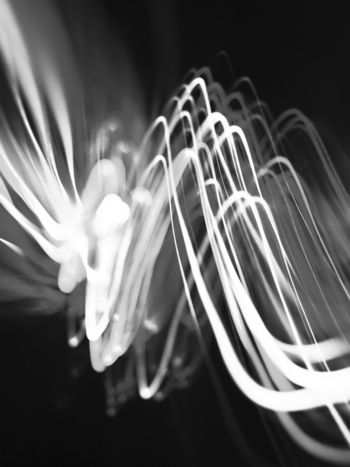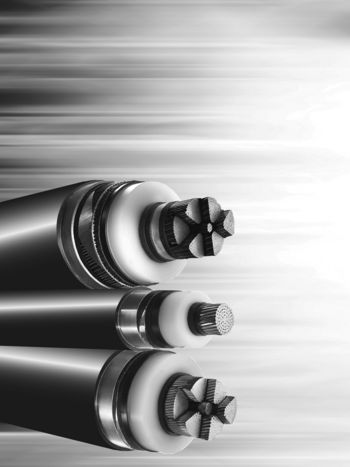Survey on industry practices and effects associated with the cutting out of stator coils in hydrogenerators
Operation of hydrogenerators with cut out faulted coils is a common practice in the industry, this is often done within acceptable limits of voltage unbalance. The purpose of this brochure was to explore and document industry experience on cutting out of faulted stators coils including the cause of the faults, techniques to locate the fault in the windings, considerations for repair methodology chosen and effects or encountered problems of cut out coils.
Members
Convenor (CA)
C. MILLET
Secretary (UG)
J. AKIROR
J. PEDNEAULT-DESROCHES (CA), P. WIEHE (AU), S. COTNER (US), O. KOKOKO (CA), A. MERKHOUF (CA), J. ROCHA (BR)
The stator winding is one of the key components in a hydrogenerator. When a stator ground fault occurs in the hydrogenerator during service, it is not always possible to immediately proceed with replacement of the faulted coils. However, often due to commercial or contractual reasons the generator must be returned back to service as soon as possible. The quick solution is often to cut out the faulted coils and to operate the generator with an acceptable voltage unbalance until a scheduled outage period in which the faulted coils can be replaced.
While the replacement of form-wound bars can be quite easy to perform with skilled personnel as long as spare bars are available. The situation is quite different when the replacement of multi-turn coils is required. In this case, one solution which requires highly skilled personnel and a significant amount of work is:
- to cut the airgap leg of some good coils,
- remove and replace the faulted coils,
- splice the new airgap coil legs into position.
The other solution, which is much easier to perform and will cost much less, is to cut out and bypass the faulted coils and to operate the generator with a voltage unbalance until it is rewound.
The Technical Brochure describes the different practices associated with cutting out coils and gives guidelines on the best practices to ensure safe operation of the generator with cut out coils.
Contents of the Technical Brochure
The Technical Brochure consists of 5 chapters and appendices as follows:
Chapter 1: This chapter provides a background and purpose of the TB supported by industry knowledge from several references and survey responses.
Chapter 2: This chapter provides information on stator windings, the types of stator windings, an educational section on the basics of winding diagrams - reading and drawing winding diagrams, calculation of winding factors, types of winding connections etc. These are aimed at providing the necessary technical information required to read and understand a winding diagram and identify where in the diagram the faulted coils are located.
Chapter 3: This chapters provides a technical guide on:
- How to find a fault on the stator winding for solidly grounded and unsolidly grounded coils
- Disconnection of a faulted coil and condition assessment of the rest of the coil
- Damage analysis of the fault on the winding and the core
- Winding repair method on:
- How to disconnect a coil
- Bypass and open a coil
- Splicing a top coil leg
- Replacing a complete coil
- Disconnecting a circuit among others
- Electrical tests required on the rest of the coil after disconnection of the faulted coils
- Measurements before returning the generator to service
- Methods to reduce the unbalance between circuits
- Spare parts required for coil replacement for lap or wave, top and bottom bars
This chapter also provides guidance on means to mitigate the negative impacts on the generator output by selecting good coils of the same voltage contribution in the circuit voltage build-up. In certain circumstances, one coil can be cut out without major consequences for the rating of the generator. In other circumstances, which is for the majority of the cases, good coils must be bypassed to balance the winding to avoid a significant derating of the generator.
Chapter 4: Presents the results from the industry survey of owners of small and large hydro facilities with representation from Canada, Germany, Portugal and USA. The survey was also responded to by manufacturers, consultants and researchers from Brazil, Canada, Croatia, Germany, Italy and USA.
The survey explored circumstances in which a fault occurs, techniques used to locate the fault, repair options adopted, techniques used to open a coil, disconnection of circuits, problems encountered with cut out coils, predictive calculations to determine other effects of cut out coils, procedures to return the generator to service, balancing of the winding etc.
Chapter 5: Provides an analysis of the collected data from the survey with respect to the repair works done, calculations and measurements undertaken in balancing the winding. The survey participants highlighted the need for a technical guide on how to cut out coils.
Appendices include:
- Definitions, abbreviations and symbols used
- Links and references
- Questionnaire circulated
Educational section on the stator winding diagram
The aim of this section is to provide sufficient knowledge to generator users to understand, draw up from scratch and use a winding diagram to determine in which phase and in which circuit the failed coil is located. This section also provides a means to calculate the voltage contribution of every coil in a stator winding and information that would be useful in calculation of the voltage unbalance in the coils after cutting out of coils.




